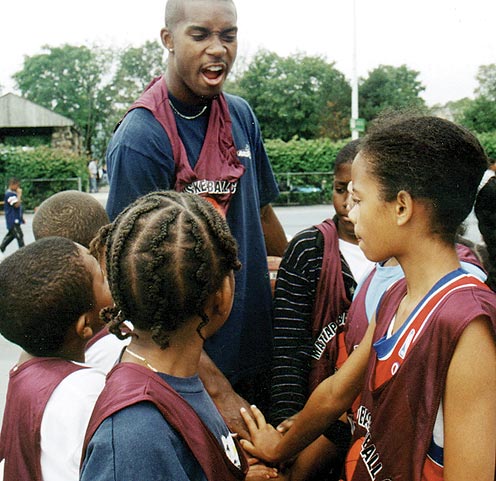Set Team Promises Rather Than Team Rules
Share This :
 “The fewer rules a coach has, the fewer rules there are for players to break”
“The fewer rules a coach has, the fewer rules there are for players to break”
~ John Madden.
As with any organization, teams require a set of rules. I encourage coaches to think about how these are communicated to get players feeling accountable and invested in the team code of conduct. Rather than requiring adherence to a set of rules, have your players set promises and pledge to honor them. This makes them feel like a part of something as opposed to being told what to do.
Try to keep the number of team rules to a minimum because too many rules will diminish the importance of the message. I get away with having just four rules, as long as I’m careful to make them fundamental and all-encompassing enough to cover all of my concerns. I don’t call them “my” rules because I don’t want them associated with only me. Rules are not about satisfying me, rules are about honoring the team’s brand. I call them “team promises.”
Explain that to be on the team, everyone (including coaches) pledges to live up to the team promises. My message is non-negotiable, but I’m still just the messenger. This frees me up to act primarily as an instructor, which is what bonds me to my players. I seem like I am simply part of the culture, aware of the promises and the need to mind them, but not primarily concerned with enforcing them. I mostly try to see if the promises can enforce themselves and I start by giving everyone the benefit of the doubt that they are capable of keeping their promises. When they can’t, I call them out, matter-of-factly. I don’t scream but I don’t tiptoe around it, either. It’s nothing personal, but the player broke his promise. Depending on the circumstance, some consequence is therefore required, as appropriate. Five push-ups often does the trick.
Rather than tell players that they can’t do this and they can’t do that, instead, share the team promises with explanations that are easy for a young player to accept. They are: Dress like a ballplayer. Run full-speed on and off the field, every time. Respect your coaches, teammates, opponents, umpires, and equipment. Never complain, never argue, never plead. That’s it.
Each of these four rules contains a specific directive and also encompasses a broader and deeper subset of rules and implied messages, and that’s the point. Four seemingly simple rules like these, when consistently enforced and followed, can govern even a rambunctious group of young players without feeling heavy-handed.
To “dress like a ballplayer” means to come ready to play baseball. Even most 8 year olds get the expanded message: show up, ready to play, and stay fully engaged. Act the part. A ballplayer dressed to play shows class, confidence, heart, and a love and respect for the game.
To “run full-speed” means to always give everything you’ve got. It also means to fight the tendency to get down on oneself. Even after a rough inning, sprint to the dugout. That shows hustle, heart, and confidence. It’s even perhaps a little intimidating, but in a classy way.
The third rule is sort of the trump card. Any time any player acts out in any unacceptable way, he has violated this rule. I remind players of this rule whenever I observe behavior I won’t tolerate: throwing a helmet, talking when I’m talking, being unkind to a teammate. Tying the bad behavior back to this rule has an impact, and seems to be more instructive than simply yelling at a player. It reminds a player why his behavior is unacceptable.
“Never complain, never argue, never plead”. The final rule is designed mostly to combat immature behavior: impulsive interruptions, selfish requests (“can I bat first?”), and pouting or sulking when things go wrong. If you nip this early, the season will be a lot more enjoyable for everyone.
What rules or team promises do you communicate to your players? How do you make sure that they are followed?
 Bruce Reed is a youth sports coach, writer, educator, and father of two. He has coached high sc hool and Little League baseball, youth soccer, basketball, and football.
Bruce Reed is a youth sports coach, writer, educator, and father of two. He has coached high sc hool and Little League baseball, youth soccer, basketball, and football.
National data actively tracking the safe return of youth sports activities
See the map
